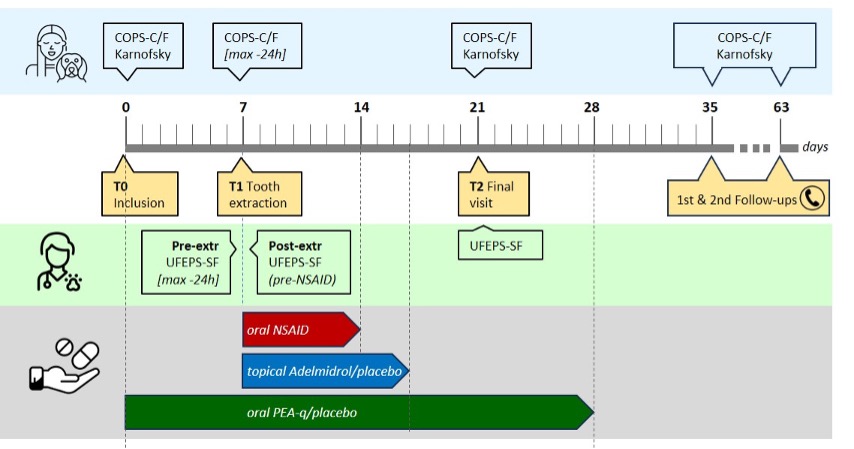Abstracts
Vol. 2 No. s1 (2025): 48th National Conference of the Italian Association for the Study of Pain
ALIAMIDES WITHIN MULTIMODAL MANAGEMENT OF DENTAL PAIN IN CATS: STUDY PROTOCOL AND PRELIMINARY DATA FROM A DOUBLE-BLIND, RANDOMIZED, PLACEBO-CONTROLLED TRIAL
D. Gamba1, F. Colonna1, K. Weizman1, C. Schievano2, G. Vidili3, G. Della Rocca4 | 1Veterinary Clinic Gran Sasso, Milano; 2Innovative Statistical Research Srl, Padova; 3Information and Documentation Center (CeDIS), Innovet Italia, Saccolongo, Padova; 4Department of Veterinary Medicine, Centro di Ricerca sul Dolore Animale (CeRiDA), University of Perugia
Publisher's note
All claims expressed in this article are solely those of the authors and do not necessarily represent those of their affiliated organizations, or those of the publisher, the editors and the reviewers. Any product that may be evaluated in this article or claim that may be made by its manufacturer is not guaranteed or endorsed by the publisher.
All claims expressed in this article are solely those of the authors and do not necessarily represent those of their affiliated organizations, or those of the publisher, the editors and the reviewers. Any product that may be evaluated in this article or claim that may be made by its manufacturer is not guaranteed or endorsed by the publisher.
Published: 22 September 2025
43
Views
0
Downloads








